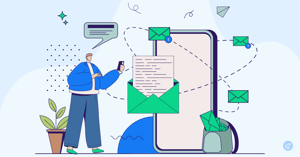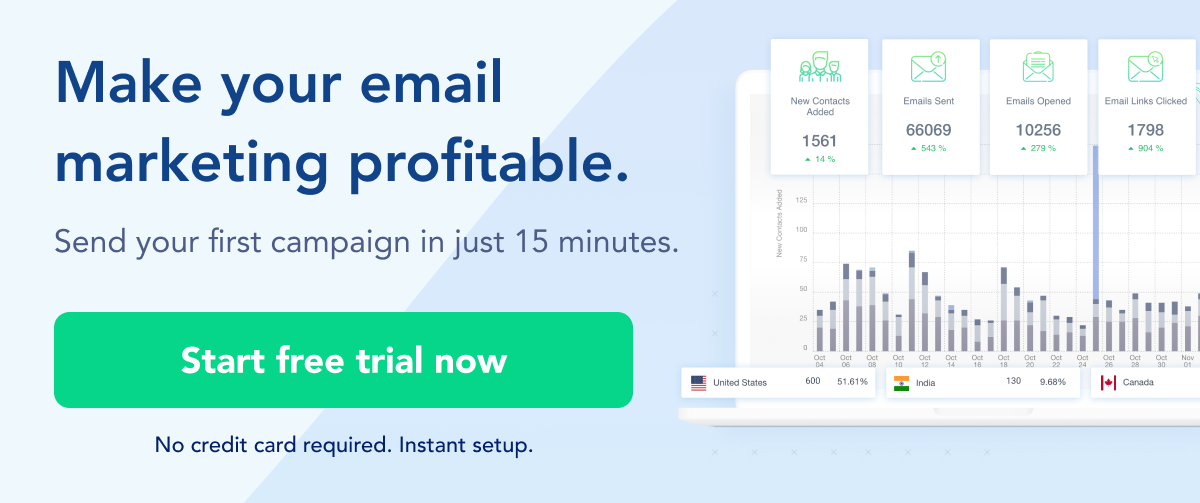
Personalized Mass Emails: The Key to Realizing Mass Customization in Email Marketing
The digital landscape offers businesses a wide range of marketing techniques and tools. From social media marketing to search engine optimization (SEO), even small enterprises have the potential to reach global audiences. While it is often considered one of the less prominent forms of outreach, personalized mass email marketing remains a relevant, practical, and affordable method in the contemporary commercial environment.
One of the benefits of connecting by personalized mass email is that you have the ability to send communications to hundreds or thousands of consumers. Nevertheless, too many businesses use a generalized, copy-and-paste approach in this regard that fails to garner engagement. This is because they believe that personalizing every email either requires labor-intensive individual editing or tools that are too costly to invest in.
In reality, a lot of businesses actually have the resources to take a more individualized approach to their digital mailouts. So, let’s take a look at some key considerations that can help your business realize mass customization in email marketing.
Why Commit to Customization?
Email marketing customization at scale is a practical option for an increasing number of businesses. Yet, this doesn’t mean it’s necessarily easy to accomplish. To do it well requires time, investment, and focus. These are all resources that are finite in any business and the last thing you want is to negatively disrupt your operations. So, it’s important to gain some clarity on why you should apply your focus toward mass customization in your email marketing.
At its core, mass customization helps businesses to meet growing consumer expectations for tailored experiences. When companies demonstrate that they treat consumers as individuals, this can incentivize greater customer loyalty. Not to mention that customized marketing ensures that the content is more relevant to the recipient, resulting in more meaningful engagement.
In some ways, personalized mass email enhances the wider customer experience your business provides. The individualized components in your emails can work alongside the personalized aspects of your website and mobile applications. You can link to deals based on their needs. You can provide education related to the products they buy. In essence, customers are getting the convenience of materials and services that are best suited to their needs no matter which of your online channels they’re using. By utilizing tools that make your relationship smooth, simple, and effective, consumers can be less inclined to head to your competitors.
You can also integrate in-app live streaming SDKs into your mobile applications, taking personalization to the next level. The combination of personalized mass emails and in-app live streaming SDKs allows you to communicate with your customers through multiple channels, delivering relevant and targeted content at different touchpoints along their customer journey. Whether they interact with your brand through emails or within your mobile app, they'll receive personalized experiences that cater to their specific needs and preferences.
Start with Existing Data
One of the roadblocks many businesses hit when approaching personalized mass email customization is the incorrect assumption that they need to immediately level up their data collection and analysis. This can delay companies’ efforts as they try to raise the capital and expertise needed for this. Yet, as with so many other aspects of business, you shouldn’t wait until conditions are perfect before you take decisive and potentially innovative actions. There’s a lot you can achieve in respect of mass customization with the data you already have at your disposal.
Start by segmenting your current crop of consumer data into clearly definable persona characteristics. You can achieve this by looking at information on customers’ prior interactions and purchasing behavior with your business. You can also utilize geographical information, the types of content visitors previously engaged with, and demographic data such as age and income. These may seem like relatively simple data points. Nevertheless, they can help you make a solid start to customizing a large number of your emails.
Remember, you’re not looking for completely tailored email content at this stage, but rather a base to build from. Mass customization is like any other element of growth in your business. Expecting too much, too soon can see you overextend your resources or fall down at initial hurdles. These relatively simple data segments can introduce consumers to your intention to provide meaningful interactions. Their engagement, in turn, provides you with more complex forms of data you can utilize for greater customization in the future.
Create Clear Email Structures
Personalized mass emails are not fully tailored materials. It’s often more helpful to remember that you’re seeking to create a balance here. You should aim to apply as much relevant customization as possible without it becoming impractical to perform at scale. Often, the best way to achieve this is to create a clear email structure for each campaign. You then create a range of different elements that can slot into each piece of the structure depending on the data segments the recipients fall into. This makes both a practical approach for your company and gives consumers the impression of a more personalized experience.
The components of the structure can include:
Subject Header
When creating content for this part of the structure, it’s important to utilize segmented data on what appeals to your consumers about your business. After all, your subject header should be designed to entice recipients to open the email. Some may be attracted to the possibility of savings, in which case this can be the crux of your header. Others may be interested in solving certain problems, in which case your header can lean into the solutions you may present.
Customer Name
This is often the most simple form of customization to achieve at scale. This is data that should have been provided during sign-up for your services or during lead generation. However, it’s worth also gaining data as to whether they prefer a more formal greeting with an honorific. Contrary to popular belief, not all customers like to be addressed by their first name in personalized emails. This is another area you can segment in your data collection.
Introduction
The introduction should feel as though you’re speaking directly to the consumer. This can touch upon elements identified in your data segments, such as your company’s connection to where in the country customers live or the values that you share. Each introduction you create to slot into this part of the structure should have the intention of briefly providing the reason for the contact and helping the recipient transition to the core of the material.
Valuable Content
This part of the structure presents the intention of the email. The customizable aspect should be showcasing the value you can provide each segment of your consumer base. This can be embedded or linked marketing content that helps them to address a problem or understand your area of expertise better. It can simply be a presentation of a range of products or services that might address customer needs that have been identified.
Call to Action
In most cases, a marketing email is wasted if it doesn’t prompt consumers to take some action. However, different calls to action (CTAs) will appeal to different segments of your consumer base. As such, this is something you can customize en masse with a range of appropriate encouragements to engage that fit your consumers’ identified preferences.
Act Authentically
You need to recognize that one of the risks of mass email customization is that it can sometimes seem disingenuous. Consumers are increasingly prioritizing authentic interactions with businesses in person, on social media, and in marketing materials. As such, while your emails should certainly be personalized, there should be nothing misleading about how or why you have taken this approach. Be transparent here and even inform consumers when they sign up for emails with your business that their data may be used for personalizing marketing.
It’s also important to avoid writing the email from a first-person perspective. This should include sending emails from a fake company representative persona or falsely stating that the email is from your CEO. Many consumers today are savvy enough to see through inauthentic attempts at replicating interpersonal interactions. The revelation of such tactics is likely to cause customers to disengage and can be damaging to your brand reputation. Use customized methods with a more generalized brand voice.
In addition, while customization can be instrumental in building trust, businesses shouldn’t take unethical advantage of this. There have been some prominent recent examples of “fruitloopery”, which is where content is written using language that purposely confuses readers. The aim of this is usually to dissuade readers from sufficiently scrutinizing claims made by the business. The personalization in your mass email marketing shouldn't make consumers erroneously assume they’re receiving communications from qualified professionals in a medical, scientific, or financial field. You should also ensure they don’t think they’re receiving recommendations based on their medical history or other deeply personal needs.
Encourage Cross-Departmental Collaborations
Email campaigns are naturally considered the domain of marketing professionals. Nevertheless, personalized mass email customization or your materials can benefit from contributors with a range of expertise. You should, therefore, encourage cross-departmental collaborations when planning and executing these types of materials. This helps your materials not only be more impactful but also have greater relevance and agility.
From the outset of your project, you should take the approach of building a specific cross-departmental team to take charge of mass customization. Naturally, this will include members of your marketing department. It’s also wise to incorporate data analytics or embedded business intelligence professionals. Members of the information technology (IT) department can be instrumental in helping your team utilize artificial intelligence (AI) and automated tools that help support and execute a successful mass communications campaign.
Each member of this diverse team has unique insights that can help make your efforts more effective. Each department likely also has different ways of working. This can prevent your mass customization project from becoming siloed either by stagnant practices or limited knowledge bases.
Conclusion
Personalized mass email in your marketing is a practical option no matter what size your business is. Indeed, utilizing this tool can help you to gain better interactions and loyalty from your consumers. Start by analyzing and segmenting the data you already have on your consumers. From here, you can create email structures with components that are customized to meet the requirements of your identified consumer segments. Remember that acting authentically and with a varied team of efforts helps you to build more meaningful and effective campaigns. With some careful analysis and good organization, you can ensure your email marketing not just reaches a wide audience, but also engages them.
-3.png?width=290&name=unnamed%20(1)-3.png)


